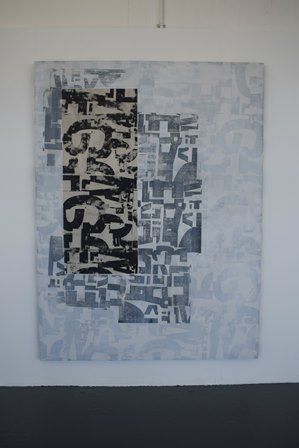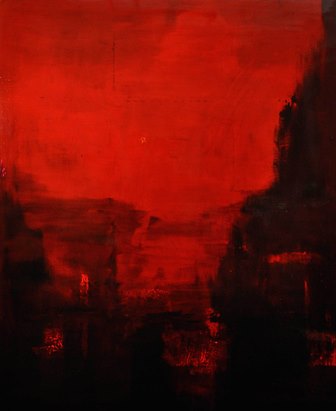
Art graduates showcase work at prestigious exhibition
Three graduates from the University of Wolverhampton School of Art have been selected to show their work at prestigious venues across the region as part of a major exhibition.
New Art West Midlands 2018 is the annual showcase for exciting new contemporary art by fine art or visual arts graduates from universities across the Midlands.
Twenty-eight artists, all of whom have graduated in the past three years, have been selected to have their work on display at prestigious local venues as part of New Art West Midlands 2018. The exhibition will open at Birmingham Museum & Art Gallery from 15th February until 13th May, the AirSpace Gallery in Stoke-on-Trent between 23rd February and 31st March and The Herbert Art Gallery & Museum in Coventry between 24th February and 13th May 2018.
The exhibition includes new large-scale installations, sculpture, photography, video, animation, paintings and digital artworks, exploring themes of identity, artificial intelligence, blurred reality and more. Although all artists are recent graduates with BA, MA and PhD level degrees, this year’s cohort includes work from a number of mature students embarking upon new directions in their careers.
Lisa Kemp, Simon Harris and Hayley Mcnally are all graduates from the Wolverhampton School of Art. Lisa, 22 from Willenhall, studied Fine Art and graduated in 2016. She is now working at The Museum of Cannock Chase in Hednesford as a Visitor Services Assistant and also at the New Art Gallery, Walsall.

She said: “I am hoping to start studying for a Master’s Degree next year in Art History to enable me to go into curating. It’s really exciting to be exhibiting my work at this year’s New Art West Midlands.
“The course at the Wolverhampton School of Art gave me an excellent grounding in Fine Art and both prepared and inspired me to pursue a career in the arts. My practise is built upon exploring themes surrounding the disturbance and alteration of imagery through play and experimentation, focusing on process and media, encouraging people to stop and look closely at things rather than just passing them by.”
Hayley Mcnally, 24 from Great Barr, studied Fine Art. She said: “The most important part for me and my work is seeing the audience interact with it. Hearing their comments, watching their expressions and how they interact with a piece I have spent time on. Through use of common materials and objects I aim to create an instant connection with majority of the audience and their personal environment.”

Over 130 artists applied to take part in New Art West Midlands 2018. This year, the 28 successful artists were chosen by a group of three female selectors: Patricia Fleming, Curator and gallerist from Glasgow, Sinead McCarthy, Curator, Liverpool Biennial and Ingrid Pollard, photographer, media artist and researcher.
With three venues, six universities and colleges and 28 artists, New Art West Midlands is the largest showcase of its type in the region. Now in its sixth year, New Art West Midlands has established itself as an important aid in developing the careers of artists. Previous exhibitors have seen their work purchased for the national Art Council Collection and have gone on to achieve solo exhibitions in respected galleries.
The exhibition will open at Birmingham Museum & Art Gallery from 15th February until 13th May, the AirSpace Gallery in Stoke-on-Trent between 23rd February and 31st March and The Herbert Art Gallery & Museum in Coventry between 24th February and 13th May 2018.
The New Art West Midlands 2018 graduates' exhibition is an initiative led by New Art West Midlands, the contemporary visual arts network for the region.
More about the artists:
Lisa Kemp
My practise is built upon exploring themes surrounding the disturbance and alteration of imagery through play and experimentation, focusing on process and media. I aim to negotiate the information overload of an urban experience by utilising and fragmenting the advertisements and throwaway ephemera that litter our everyday lives. Letterforms (found on billboards, advertisements, graffiti and flyposting while traversing towns and cities) are corrupted to become pure, simple forms and shapes. What happens when symbols as familiar and recognisable as text (which we see every day of our lives, whether we notice it or not) are broken down? This is a question which I am constantly exploring throughout my practice; does an image need to be complete to evoke a sense of familiarity?
Silk screen print, collage and paint are used to create the pieces. The material similarities between media, source material and concept are directly linked: The layering of torn posters, faded advertisements and half hidden silk-screened forms create a collage like, over printed effect, again evocative of flyposting and weathered billboard advertising. This idea of simultaneous construction and de construction is one that I am interested in through my exploration of materials and processes.
The works (3 paintings: 150 cm x 200) are intended to be displayed in portrait orientation in a specific order (pictured). Making use of silk screen print on canvas, thixotropic primer, collaged newspaper, billboard posters and white paint. Traditionally hung with heavy duty picture hooks, the paintings would preferably have a natural light source (or a light trained on each one respectively if natural light is not available)
We are exposed to over 5,000 advertisements a day, how many of these do we really notice? My aim for the work is to inspire the viewer to recognise that we may not be as aware of our surroundings as we think we are, would we notice if the text on a billboard that we pass every day was no longer legible? If the imagery on familiar advertisements were corrupted beyond recognition? The use of collage, layering, hiding and revealing information draws on this, showing the viewer that there is a lot more to things than we know, and we would discover a whole new wealth of information if we only stopped to look closer.
SIMON HARRIS

Through my paintings I question what relationship the viewer has with the surface and pictorial space of painting; what can that encounter elicit? What are the implications for an immersive pictorial space in painting when considered outside the historical figure/ground or subject/object relationship? I am interested in producing a cinematic glow that references a digital era of the saturated screen. Generating a luminous sheen that acts as a hinge to a constructed virtual reality of the pictorial space.
This is an age when the pictorial image is no longer related to a reality but rather the reality the maker wants to construct. I establish an illusion of the real that isn’t fixed, that is figural, an evolving precarious pictorial space almost on the verge of collapse. I incorporate not only a semblance of an illusionistic space, but also the resemblance of the viewer who is reflected in the surface.
My paintings emerge from an anonymous narrative in the studio; the pigment and binder are layered at a diaphanous thickness in a labour-intensive process that denies the authorial brush of the artist in contrast to the immediacy expected of image making in this digital era. The surfaces resonate with the potential cinematic glow whilst the illusionistic chromatic tension of the surface oscillates. This physical intensity is heightened through the shared social activity of the viewer as we pursue the allusive image down the corridors of the surface. The viewer has the potential to encounter these objects and discover their own painterly moment rather than the indexical mimicking of the movements of the maker or observing a known reality.
Hayley McNally
Hayley McNally works with a range of materials, primarily creating sculptures. She prefers sculpture as it allows the audience to interact with a piece in various ways and respond to materials and scale.
Her work usually consists of materials and objects that can be found in most homes, construction sites and outdoors. She chooses to work with such materials for a few reasons, one is familiarity with the materials, another is artist influences such as Carl Andre, Rachel Whiteread and those artists of the Arte Povera Movement.
Urban Heights (2017) is about giving new life or giving attention to the usually unrecognised, mundane and often discarded materials that we encounter every day. I want the public to enjoy the characteristics of each material and appreciate the materials that are not always valuable in terms of money but for how often they are used in our lives. By making this piece purely about the materials it allowed me to make my biggest collective sculpture yet.
Urban Heights (2017), is made up of multiple stacks, of varying dimensions, that are held together by weight and gravity alone. I knew I wanted to create a free-standing piece that the audience could navigate/interact with as they desired; I wanted them to feel like the man-made stacks were developing around them.
Anyone wanting to study at the Wolverhampton School of Art should visit our next Open Day on Saturday 17th February 2018.
ENDS
For more information please contact the Media Relations Office on 01902 32 2736 or 01902 518647.
Date Issued:
For more information please contact the Corporate Communications Team.


/prod01/wlvacuk/media/departments/digital-content-and-communications/images-2024/240328-Varsity-Line-Up-Resized.jpg)
/prod01/wlvacuk/media/departments/digital-content-and-communications/images-18-19/220325-Engineers_teach_thumbail.jpg)
/prod01/wlvacuk/media/departments/digital-content-and-communications/images-2024/240404-Digital-Humanities-Training-Resized.jpg)
/prod01/wlvacuk/media/departments/digital-content-and-communications/images-2024/240320-Uzbekistan-Resized.jpg)
/prod01/wlvacuk/media/departments/digital-content-and-communications/images-2024/240229-The-Link-Resized.jpg)
/prod01/wlvacuk/media/departments/digital-content-and-communications/images-2024/240404-Pharmacy-Students-Resized.jpg)

